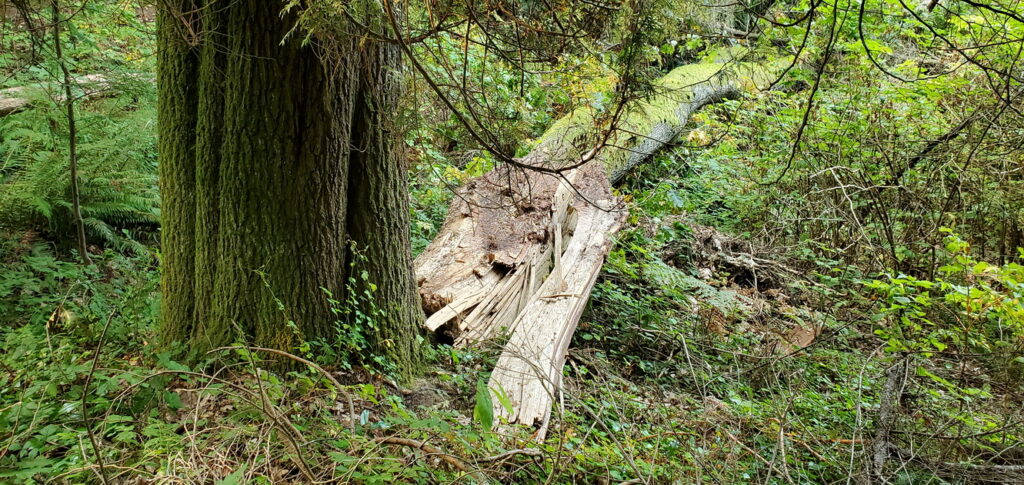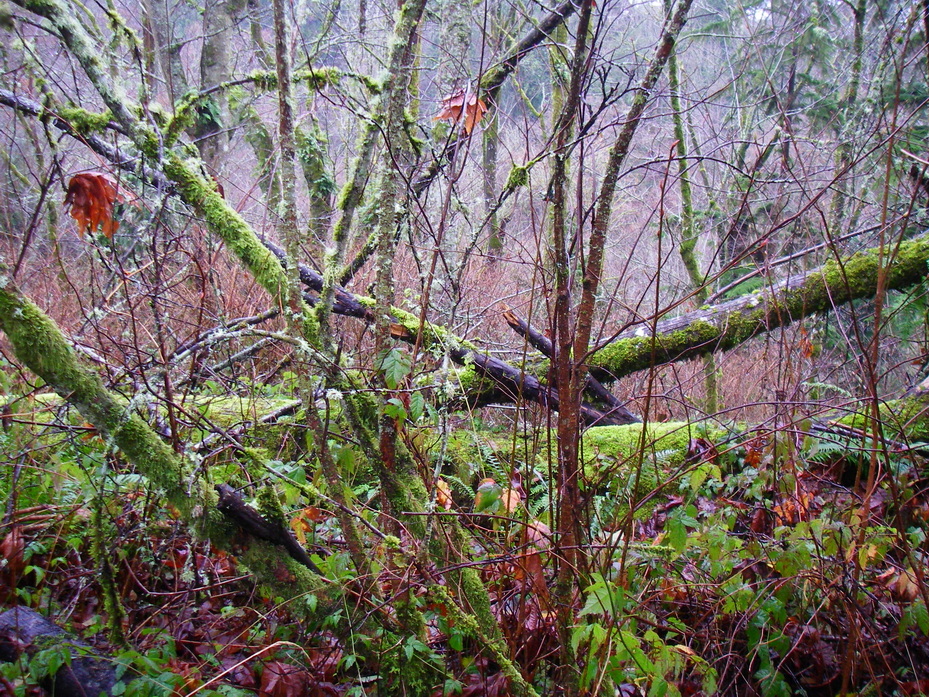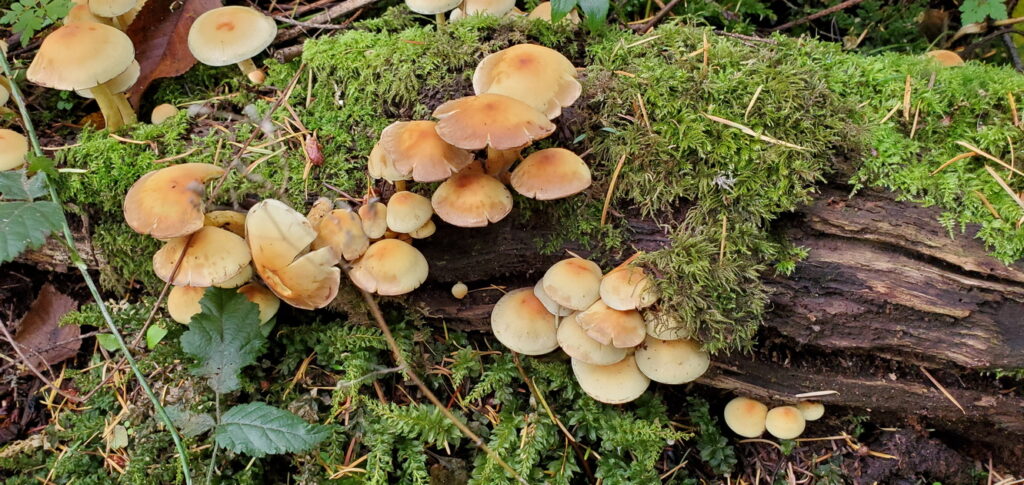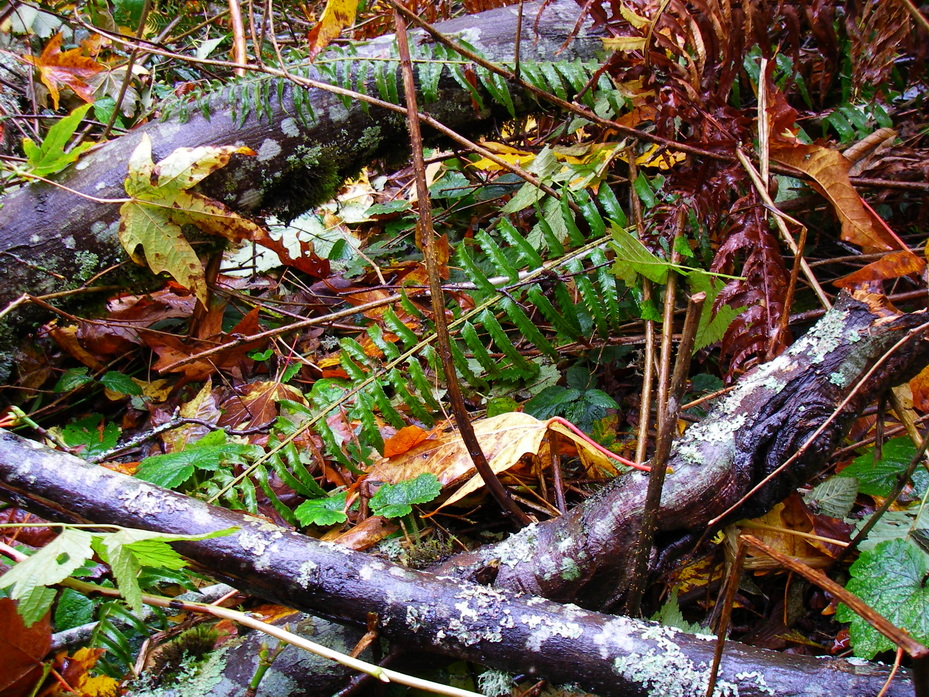Almost every year powerful winds from Pacific storms kill full-grown trees in the Puget Lowlands, blowing them down or snapping them off. This post consists of captioned photos showing a few of these casualties in Everett’s urban forests over the past 15 years, and their role in the ecosystem as they decompose.
Trees growing on the eastern slopes of the Salish Sea can take direct hits from gale-force, southwesterly winds. Though not as vulnerable as the Washington Coast, gusts can still reach 90 miles per hour . “Windthrow occurs when the force of the wind exceeds a tree’s anchor strength.” These alders toppled when their roots lost their grip in the saturated soil.The roots of these trees never left the thin layer of topsoil covering densely packed glacial till, making them susceptible to windthrow. Windsnap – One study suggested that all trees, regardless of size or age, break when winds reach 94 miles per hour .There are no safe spots in the forest during windstorms .An immense limb broke from this tree, opening a wound that will be slow to heal and vulnerable to infection . A thin blanket of snow highlights several fallen trees usually hidden in the brush that grew up around them. Fallen trees play an important role in the forest ecosystem .They provide perfect habitat for mosses because they provide a stable growing surface that “retains moisture for extended periods.” They provide sustenance for a wealth of decomposing fungi like these Hypholoma .Decomposition of all the woody debris from trees gradually recycles nutrients back into the soil . “Wood is good,” taught my mentor, Joanna Nelson de Flores, Urban Forests Program Manager for King County. Though in the short term some understory plants are damaged by falling trees, in the long term they can benefit from openings in the canopy that let in more sunlight . If a windthrown tree retains enough unbroken roots still attached in the soil it can rise again, a “phoenix tree ,” growing on its side and transforming branches into new leaders.












